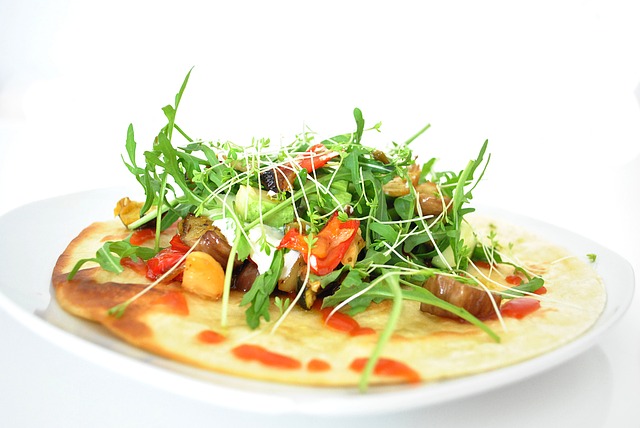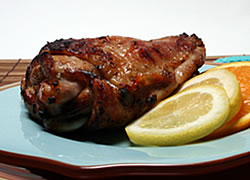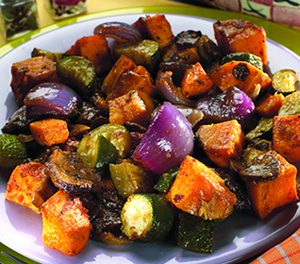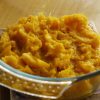- Non-stick pans are essential for low-fat cooking. Food that will not stick to the pan will require far less oil or margarine. When using non-stick pans, reduce heating temperature slightly to avoid scorching foods.
- Using a molcajete (lava rock "mortar and pestle" used since ancient times to grind spices) or blender, prepare a spice blend using garlic, cumin and peppercorns. Mix with a small amount of water. This will keep for about 14 days in the refrigerator. Spices will add extra flavor to low-fat foods.
- "Refried" beans do not have to be fried. Prepare low-fat beans and use a potato masher to achieve thick consistency. Allow excess liquid to evaporate by simmering gently. No extra fat is needed. (You may add any number of spices, chili peppers, onions, garlic, etc., to taste to give your "refried" beans an extra flavor boost).
- Corn tortillas have very little fat compared to flour tortillas. They can be prepared from a corn flour mix and are low in sodium when made without added salt. These should be used more often at the table and in recipes. One flour tortilla has more than three times as much fat as a corn tortilla.
- Salsa prepared at home, without added fat, are a great way to enhance the flavor of many foods and add vitamins to your diet. Tomatoes and chiles are good sources of Vitamins A and C, and salsa is low in calories. Homemade salsas are lower in sodium than commercial salsa.
- When sauteing vegetables to be used in a recipe, chop them finely and saute using non-stick cooking spray or a very small amount of oil. Remember to reduce heating temperature and watch very closely to avoid scorching.
- In preparing "guisados," (meats sauteed and prepared in a spicy tomato-based gravy), remove all skin and excess fat from meats. Saute over low heat using no additional fat, and drain excess fat before adding other ingredients.
- Use baked tortillas for making tostadas, chips, chalupas and tacos. They taste great!
- Experiment with different low fat cheeses for Mexican dishes. Or, mix a low fat cheese with a small quantity of regular cheese, lowering the overall fat content.
- Eliminate use of lard and shortening. Oils and soft tub margarine can be substituted for these in most recipes. Liquid margarines are good choices when used in small quantities.
- Adding fresh vegetables to beans, rice and vermicelli will add more vitamins.
- Prepare rice and pasta dishes with only a small amount of oil. Mexican rice can also be prepared by steaming rice instead of frying and adding all the usual spices for a great taste.
- Flour tortillas can be made with oil instead of shortening. Whole wheat tortillas made with oil are even better because they contain fiber and other healthy nutrients.
- Do not add extra ingredients such as mayonnaise and sour cream to avocadoes when making guacamole. These condiments add many more calories to a high-calorie food (avocado). Add fresh vegetables such as onions and tomatoes, or salsa and lime juice. Guacamole should only be consumed occasionally. It is a very high-fat food.
- When cooking pinto beans, add only small amounts of fat. It is unnecessary to add large pieces of salt pork or many slices of bacon to beans while cooking. Adding one slice of bacon and a small amount of oil will give flavor but not excess fat. Try adding olive oil and a variety of other vegetables such as celery, carrots, onions, cilantro and tomatoes. They add powerful nutrients and flavor to pinto beans.
- For a diet with restricted salt intake, omit salt and change salty ingredients in recipes. Note the sodium content of each recipe before preparing. Most are low to moderate in sodium, but there area few that are high in sodium. A dietitian can suggest other options as well.
Reprinted with permission from Healthy Mexican Cooking, Authentic Low-Fat Recipes, by Velda de la Garza. A Spanish text version of this cookbook is now available from Appletree Press, Inc.; courtesy of Marilyn Helton.








